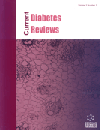
Full text loading...
We use cookies to track usage and preferences.I Understand
Several epidemiological studies have appreciated the impact of “duration” and “level” of hyperglycemia on the initiation and development of chronic complications of diabetes. However, glycemic profiles could not fully explain the presence/absence and severity of diabetic complications. Genetic issues and concepts of “hyperglycemic memory” have been introduced as additional influential factors involved in the pathobiology of late complications of diabetes. In the extended phase of significant diabetes randomized, controlled clinical trials, including DCCT/EDIC and UKPDS, studies have concluded that the quality of glycemic or metabolic control at the early time around the diabetes onset could maintain its protective or detrimental impact throughout the following diabetes course.
There is no reliable indication of the mechanism by which the transient exposure to a given glucose concentration level could evoke a consistent cellular response at target tissues at the molecular levels. Some biological phenomena, such as the production and the concentration of advanced glycation end products (AGEs), reactive oxygen species (ROS) and protein kinase C (PKC) pathway activations, epigenetic changes, and finally, the miRNAs-mediated pathways, may be accountable for the development of hyperglycemic memory. This work summarizes evidence from previous experiments that may substantiate the hyperglycemic memory soundness by its justification in molecular terms.

Article metrics loading...

Full text loading...
References


Data & Media loading...

